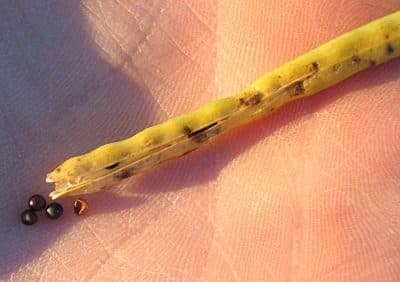No one would’ve expected what they found when a group of researchers, agronomists and industry members went out to check a field that had previously been in hay for 20+ years, rarely had custom equipment brought onto the field, had never grown a susceptible variety and had never grown the same variety back-to-back. They found clubroot. A noticeable amount of it.
Now the management of this field has changed for a very long time. Try to prevent this from happening on your farm by setting up a sound disease management plan and adhering to it. Take control of disease on your farm before it can take control of your fields!
Do your best to prevent the build-up of all diseases, regardless of whether it has been a wet or a dry year in your region. A bit of effort now could save you some yield and a lot of headache! Have a look in your fields for patches of premature ripening and the other disease symptoms to help with late fall’s management plan and next year’s field plan. An ounce of prevention is worth a pound of the cure!
If you’d rather watch how to scout for disease than read about it, check out this CCC video and this blackleg video and clubroot video.
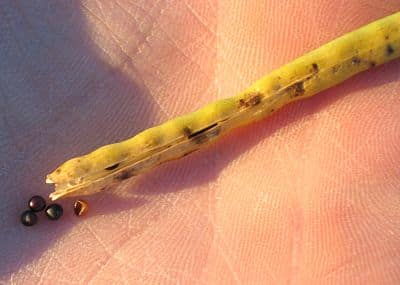
Alternaria – Although it is commonly present, it is rarely an economic problem in B. napus (Argentine) canola. Some superficial infection may turn swaths black as the crop ripens and dies. Alternaria tends to be more damaging in B. juncea or B. rapa canola. Read more.
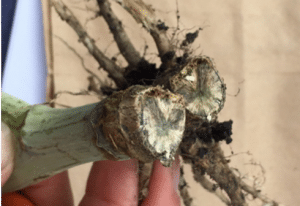
Blackleg – Look for areas with lodged or prematurely ripened plants. Examine the bottom to middle areas of the stem for lesions. Black pepper-like specks (pycnidia) may appear within the lesions. When blackleg is severe enough to cause yield loss, the plant will have irregular, knotty, woody cankers at the base of the stem. This infection will eventually grow through the stem, cutting off nutrient flow. If you see plants drying up, use garden clippers and slice through the stem at the base. If more than half the area of the stem is blackened, blackleg has likely reduced the yield of that plant. How to rate a crop for blackleg.
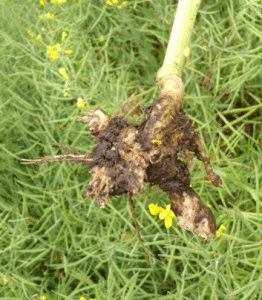
Clubroot – Examine a number plant roots for galls, which can be quite inconspicuous in areas of low spore concentrations and show no above ground symptoms. Examine the whole field for patches of low or stunted populations, prematurely ripened plants, or weedy patches. If you are seeing any of these patches, take a close look at the roots of these plants. Read more.
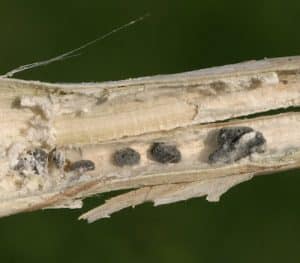
Sclerotinia – Look for areas with lodged or prematurely ripened plants. Brown or yellow plants scattered throughout your green crop may indicate a low level infection. Sclerotinia stem rot is most damaging when stem infection is early, and severe to the point where whole plants die before seed matures. Examine the lower to middle areas of the stem looking for large bleached or tan lesions. In some cases, white fungal growth may appear on green stems. Infected stem tissue is often hollow and hard, black sclerotia bodies — similar in appearance to mouse droppings — may be found inside the infected stems.
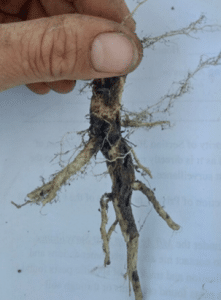
Late season foot rot/root rot – Canola plants exhibiting brown superficial symptoms at ground level likely have fusarium foot rot, which produces tan brown lesions with concentric markings. Another possibility affecting canola roots at adult stages is brown girdling root rot (BGRR), which is more of an issue in Polish canola.
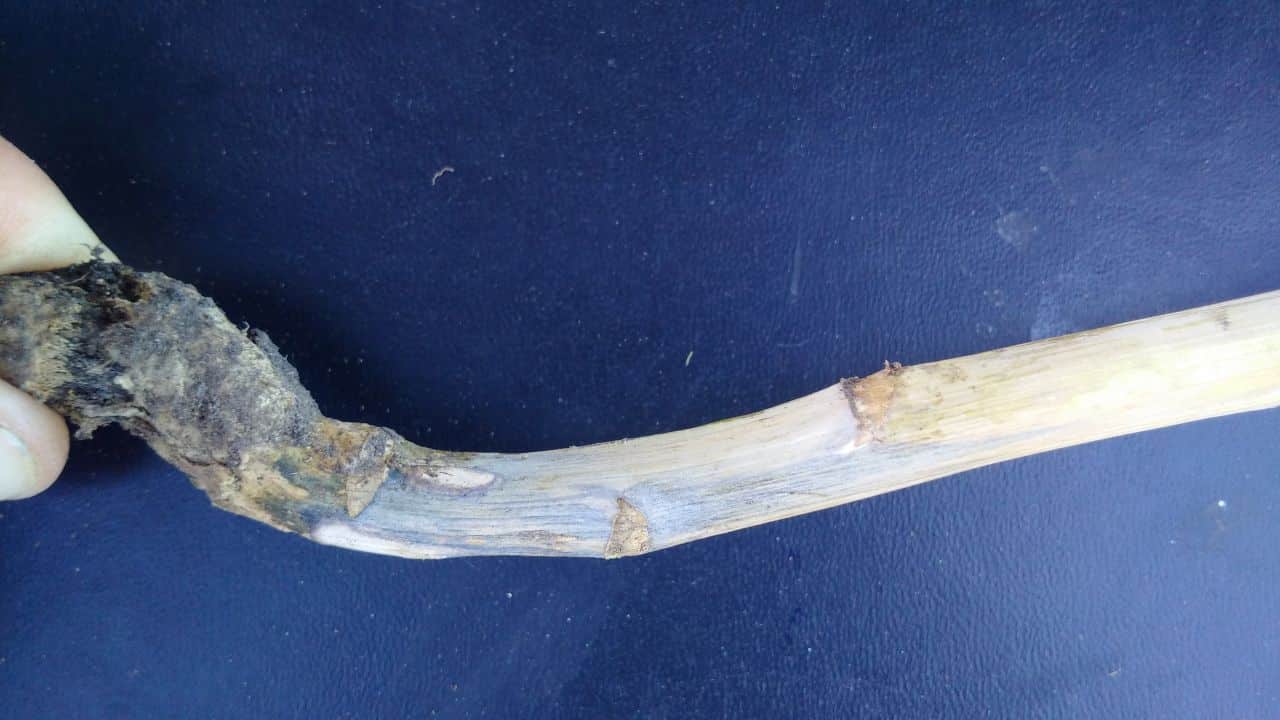
Grey stem – Grey silvery to purplish patches develop on stem. These can cover whole stems and continue to spread in stubble as plants decompose. Grey stem usually infects too late to cause significant yield loss. To differentiate blackleg and grey stem at the end of the season, cut the lower stem and look for dead blackened tissue in the crown — a characteristic of blackleg, not grey stem.
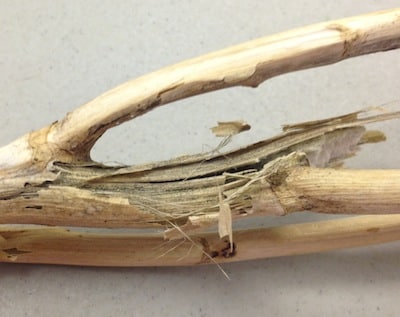
Verticillium stripe – Disease symptoms in canola include leaf chlorosis, early ripening, stunting and as the disease progresses, necrosis and shredding of the stem tissue. Once the plant is fully ripe, the stem peels to reveal tiny black microsclerotia which resemble ground pepper in appearance. These microsclerotia remain on the plant stem or fall to the soil. While this may seem similar to the blackleg symptom, these specks are below the surface for verticillium stripe and always on the surface for blackleg. Read more.

